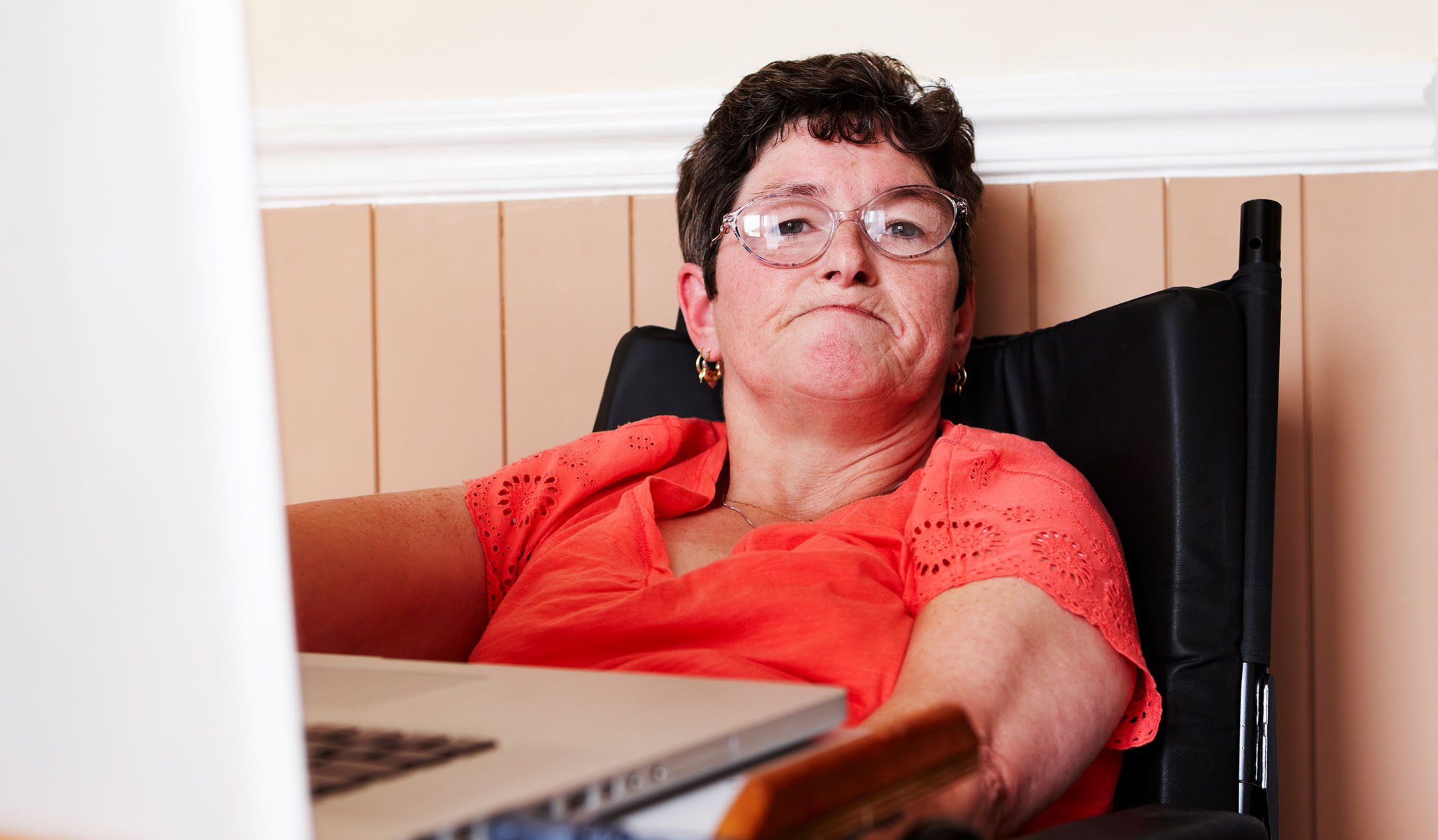
Research suggests that women with disabilities are more likely to experience domestic violence, emotional abuse, and sexual assault than women without disabilities.1 Women with disabilities may also feel more isolated and feel they are unable to report the abuse, or they may be dependent on the abuser for their care. Like many women who are abused, women with disabilities are usually abused by someone they know, such as a partner or family member.
How can I recognize signs of abuse in a loved one with a disability?
Relatives must be strong advocates for their loved ones with disabilities. If you have a relative with a disability, learn the signs of abuse, especially if your relative has trouble communicating.
Report abuse to adult protective services if you notice any of the following with a loved one who has a disability:
- Suddenly being unable to meet essential day-to-day living needs that affect health, safety, or well-being
- Lack of contact with friends or family
- Visible handprints or bruising on the face, neck, arms, or wrists
- Burns, cuts, or puncture wounds
- Unexplained sprains, fractures, or dislocations
- Signs of injuries to internal organs, such as vomiting
- Wearing torn, stained, soiled, or bloody clothing
- Appearing hungry, malnourished, disoriented, or confused
Each state has an adult protective services agency. Use this online map to find help in your area.
How common is violence or abuse against women with disabilities?
Who commits violence or abuse against women with disabilities?
Most often, violence or abuse against women with disabilities is by their spouses or partners. But women with disabilities can also face abuse from caregivers or personal assistants.4 Women with disabilities who need help with daily activities like bathing, dressing, or eating may be more at risk of abuse because they are physically or mentally more vulnerable and can have many different caregivers in their life.5
What should I do if I suspect abuse against a woman with a disability?
Report any suspected abuse to adult protective services. Each state has an adult protective services agency. Use this online map to find help in your area.
Did we answer your question about violence against women with disabilities?
For more information about violence against women with disabilities, call the OWH Helpline at 1-800-994-9662 or check out the following resources from other organizations:
- Deaf Services — Information from the National Domestic Violence Hotline.
- Meeting the Needs of Underserved Victims (PDF, 274 KB) — Publication from the U.S. Department of Justice Office for Victims of Crime.
- Responding to Abuse Against Women with Disabilities: Broadening the Definition of Domestic Violence (PDF, 251 KB) — Information from the Family Violence Prevention Fund.
- Victim Connect Resource Center — Program of the National Center for Victims of Crime.
- Violence Against Women with Disabilities — Information from Advocates for Human Rights.
Sources
- Breiding, M.J., Armour, B.S. (2015). The association between disability and intimate partner violence in the United States. Annals of Epidemiology; 25(6): 455-457. doi: 10.1016/j.annepidem.2015.03.017.
- Hughes, R.B., Lund, E.M., Gabrielli, J., Powers, L.E., Curry, M.A. (2011). Prevalence of interpersonal violence against community-living adults with disabilities: a literature review. Rehabilitation Psychology; 56(4) 302-19.
- Barrett, K.A., O'Day, B., Roche, A., Carlson, B.L. (2009). Intimate partner violence, health status, and health care access among women with disabilities. Women's Health Issues; 19(2): 94-100.
- Plummer, S.B., Findley, P.A. (2012). Women with disabilities' experience with physical and sexual abuse: Review of the literature and implications for the field. Trauma Violence Abuse; 13(1), 15-29.
- Baylor College of Medicine Center for Research on Women with Disabilities. (n.d.). Violence Against Women with Disabilities - Fact Sheet #1: Findings from Studies Conducted by the Center for Research on Women with Disabilities At Baylor College of Medicine, 1992-2002.

